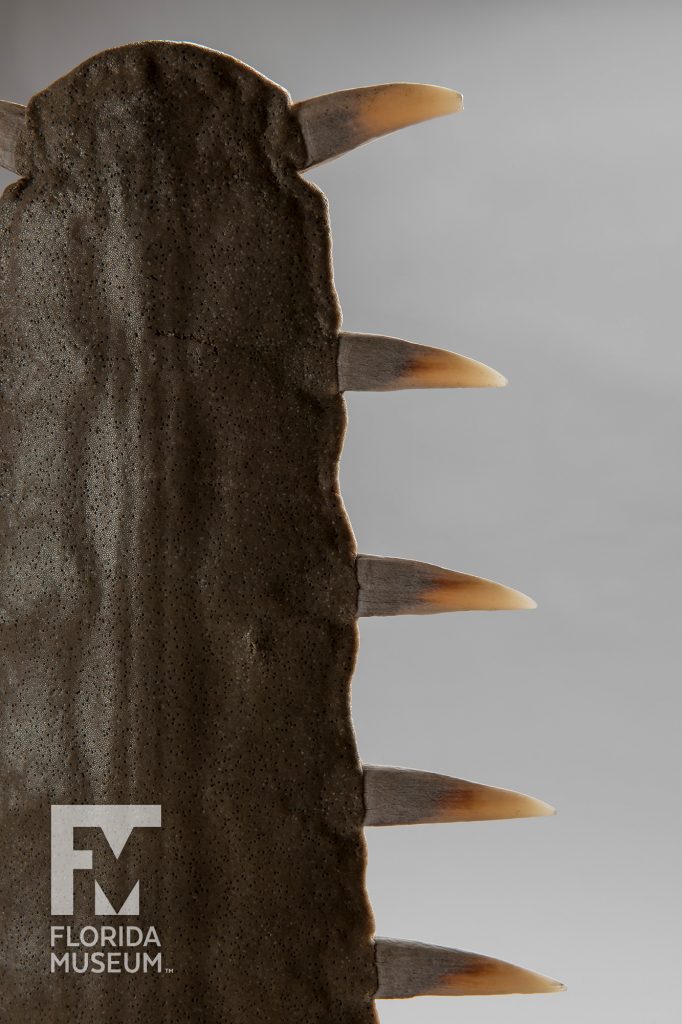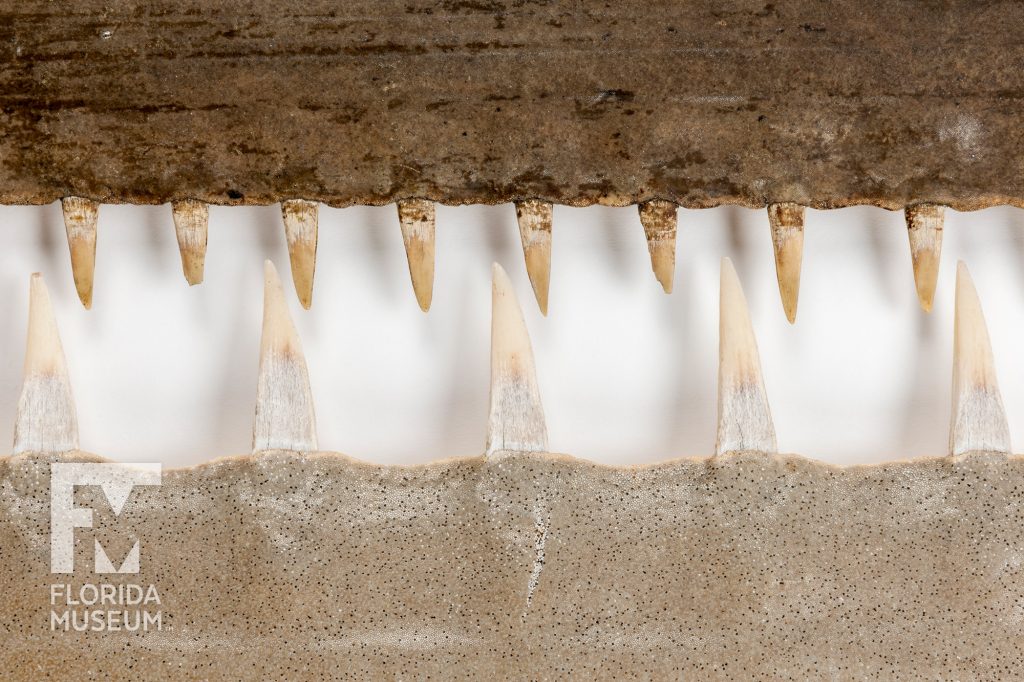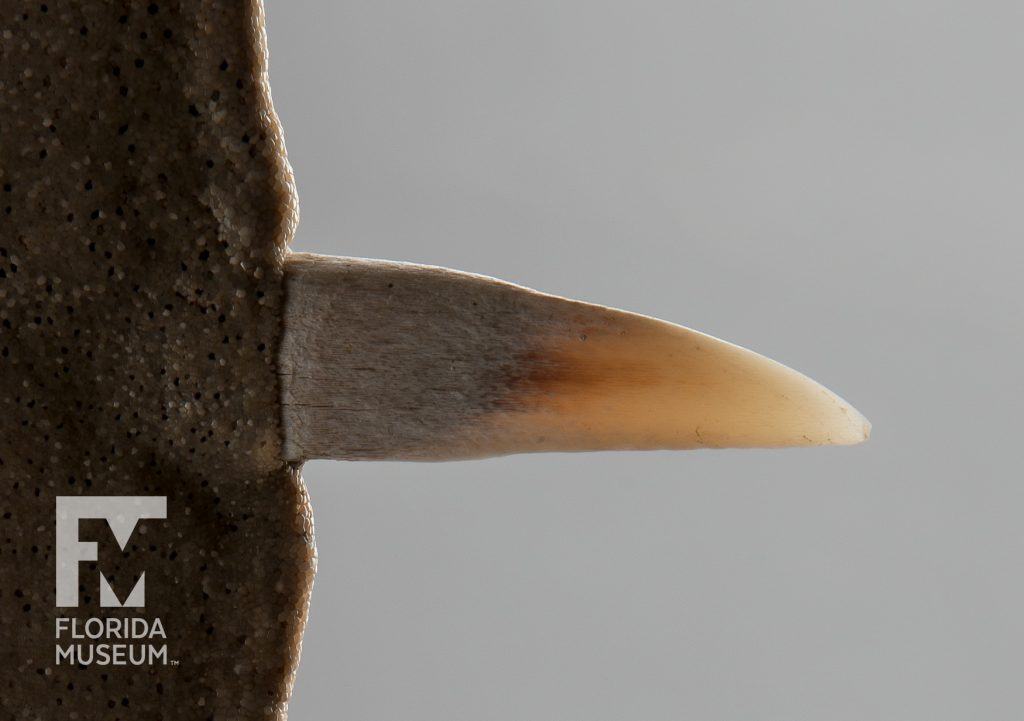The five species of sawfishes are globally endangered in part because their rostra (snouts) are prized trophy items. The Largetooth is now extinct in U.S. waters and the Smalltooth, once found from New York to Texas, is now largely restricted to southern Florida.
Summary
Sawfish Rostrum
Top: Smalltooth Sawfish (Pristis pectinata)
Collected in the Gulf of Mexico, mid-1900s
Bottom: Largetooth Sawfish (Pristis pristis)
Collected in Panama, mid-1900s
Collection
Additional Information
Species profile: Smalltooth Sawfish (Pristis pectinata)
Species profile: Largetooth Sawfish (Pristis pristis)
Read: Conserving Florida’s smalltooth sawfish
Story
So what we have here are the rostra, the “saws” of two sawfishes that are found in the United States: the Largetooth Sawfish and the Smalltooth Sawfish. The Largetooth Sawfish, appropriately enough, has larger teeth than does the Smalltooth. Both of these species are critically endangered species worldwide and are on the Endangered Species List in the United States, the first such marine fishes in the United States. The Smalltooth is found only on the southern tip of Florida now, the remnants of a sad range that once went from New York all the way to Brazil. The Largetooth was last seen in U.S. waters about 50 years ago and is essentially extinct in U.S. waters right now.
As a group, the sawfishes, of which there are five species worldwide, are endangered throughout their ranges largely because these animals are found very close to where humans live. They like to live in estuaries – the brackish water areas between freshwater and marine areas – they move up into rivers and of course all of these locations are close to where humans have habitation: where we fish, where we throw our garbage, where we put up our dams. So as a result, sawfishes are in some trouble around the world because of human activity.
George Burgess
Director, Florida Program for Shark Research*
Florida Museum of Natural History
Exhibit
On display Sept. 23, 2017-Jan. 7, 2018, Rare, Beautiful & Fascinating: 100 Years @FloridaMuseum celebrated the Museum’s rich history. Each Museum collection was asked to contribute its most interesting items and share the stories that make them special. Though the physical exhibit is closed, this companion website remains online, providing an opportunity to experience the Florida Museum’s most treasured specimens.
Exhibit Area: On the Brink
Theme: Cautionary Tales
 Want to see more? Explore more than 300 breathtaking color photos of plants, animals, fossils and cultural heritage materials from the Florida Museum of Natural History’s collections in the award-winning book All Things Beautiful available from the University Press of Florida.
Want to see more? Explore more than 300 breathtaking color photos of plants, animals, fossils and cultural heritage materials from the Florida Museum of Natural History’s collections in the award-winning book All Things Beautiful available from the University Press of Florida.
*This title was accurate at the time the exhibit was on display in 2017. Please visit the program website to verify current staff and student information.



